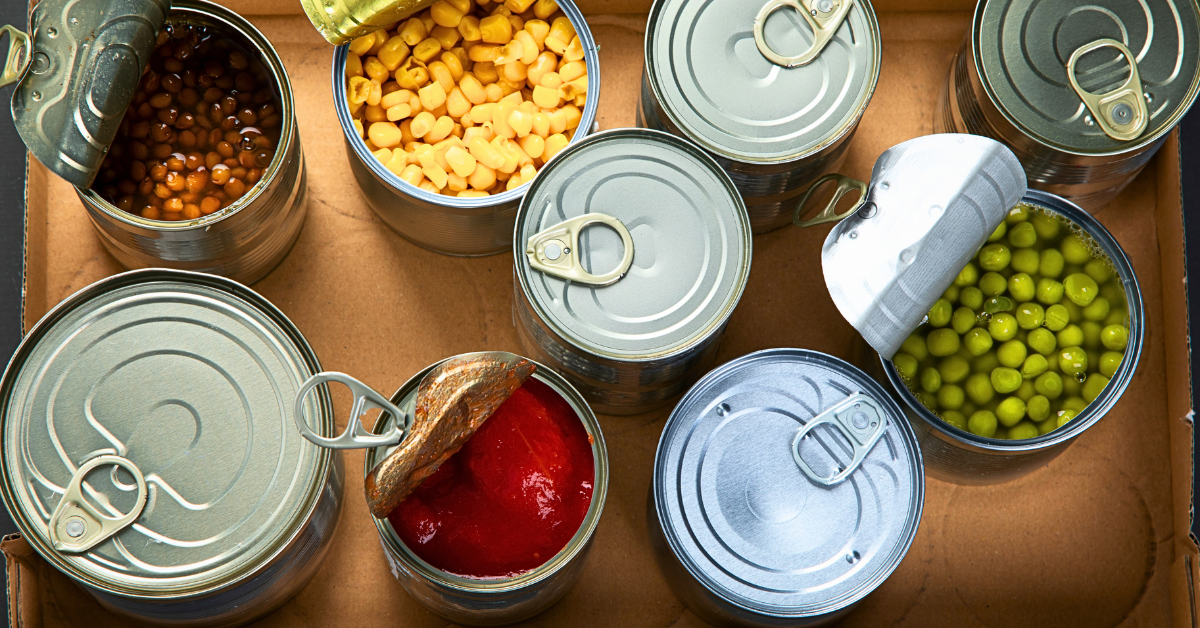- Inflation-driven grocery hikes are reviving cheap, shelf-stable staples—canned/dried beans, processed meats, powdered milk—to stretch budgets.
- These vintage items reduce waste, boost shelf life, and offer versatile, affordable meal solutions amid sustained higher food prices.
These days, with grocery bills climbing higher and higher, many of us are digging into our grandparents’ playbooks for ways to stretch our dollars at the supermarket.
It’s no secret that inflation has been hitting hard—food prices have jumped about 29% between 2020 and 2025, thanks to everything from global supply chain issues to tariffs and even conflicts like Russia’s invasion of Ukraine.
And the frustrating part? Even if inflation cools off, those prices aren’t likely to drop; they just won’t rise as fast. So, folks are turning back to those classic, no-frills items that have been around for decades—things like canned beans, Spam, and powdered milk.
The FrankNez Media Daily Briefing newsletter provides all the news you need to start your day. Sign up here.
These aren’t just nostalgic throwbacks; they’re practical choices that help keep meals on the table without breaking the bank.
Take canned beans, for starters. They’re one of the top items seeing a surge because they’re an affordable protein punch that can stand in for pricier meats. Sales of dried beans and pulses are projected to grow at a compound rate of 5% over the next decade, according to market research.
Why the appeal? A can of beans might set you back just a buck or two, and they last forever in your pantry. You can toss them into salads, burritos, or even upgrade them with some spices for a hearty chili.
Over at The Daily Meal, they point out that dried beans are even cheaper—about half the price of canned—and with potential tariffs on imported canned goods, more people are opting for the dry variety to soak and cook at home. It’s a simple swap that adds fiber and keeps you full, perfect for busy weeknights when you want something nutritious without the fuss.
Other Proteins Making a Comeback

Speaking of proteins on a budget, canned and processed meats like Spam are popping up in carts more often. Reuters reported double-digit sales jumps for these items, with grocery execs noting a dust-off of entire displays for things like Chef Boyardee and corned beef.
Spam, that iconic canned pork and ham mix, costs around three to four dollars a can and comes pre-cooked, ready for anything from fried rice to omelets or even Hawaiian-style musubi.
With fresh meat prices soaring—beef alone has been a pain point—it’s no wonder this shelf-stable staple is back.
Tasting Table notes that the global canned meat market grew rapidly from 2023 to 2025 and is expected to hit over 47 million dollars by 2033. Sure, it’s processed, so moderation is key, but paired with veggies or rice, it makes a filling meal that feels comforting on a tight budget.
Dried and canned vegetables are another smart pick that’s gaining traction. Fresh produce can spoil quickly, leading to waste and extra costs, but jarred or pickled veggies last much longer.
Instacart has seen a “brine boom” with pickles and brined items flying off shelves, driven by social media recipes and the push to cut food waste. Pickling your own—think cucumbers, radishes, or beets in a simple vinegar brine—extends the life of sale-priced veggies and adds a tangy kick to sandwiches or salads.
As The Takeout explains, it’s one of the best ways to preserve produce that might otherwise go bad, especially with fresh vegetable prices spiking due to tariffs and weather issues.
Dried veggies, like sun-dried tomatoes or mushrooms, are cheaper per gram and perfect for soups or stews, reducing the need for frequent grocery runs.
Powdered Milk is Also Coming Back
Then there’s the return of shelf-stable dairy options, like powdered milk and condensed milk. With fresh milk prices fluctuating, powdered milk is a pragmatic choice—it’s cheaper per serving, stores indefinitely, and works great in baking or coffee.
Market forecasts show the global powdered milk sector hitting 53.4 billion dollars by 2035, fueled by these economic pressures. Condensed milk, that thick, sweet pantry hero, is versatile too—use it in desserts or even savory dishes like carnitas.
The Daily Meal highlights how shelf-stable milk avoids refrigeration until opened, making it ideal for stocking up during sales and cutting down on environmental impact. It’s especially handy for smaller households where fresh milk might go to waste.
Then There’s Canned Fish and Boxed Dinners
Canned fish is swimming back into favor as well. Items like tuna, sardines, and salmon offer the nutrition of fresh seafood but at a fraction of the cost, with a shelf life that beats most resolutions.
Grand View Research pegs the canned seafood market at 35.7 billion dollars in 2024, projecting growth to 44.2 billion by 2030. Eat This, Not That! notes that canned tuna is a go-to for quick proteins, like in tuna cakes with veggies and panko for a less fishy twist.
With fresh fish prices up—crab jumped over 10% in 2025—canned options let you whip up pasta, chowders, or even trendy “seacuterie” boards without the splurge.
Boxed dinners and helpers, like Hamburger Helper, are seeing a nostalgic revival too. Sales spiked 14.5% from June to August 2025, per reports, because they turn a pound of ground meat into a family meal with minimal extras.
You can even go vegetarian by subbing in lentils, making it adaptable for different diets.
Grains and baking basics are rounding out the list. Rice and pasta are cheap staples that pair with almost anything—think rice with beans for a complete protein, or pasta in a homemade mac and cheese with canned tomatoes.
Alternative grains like barley or millet are cheaper than trendy ones like quinoa, offering nutty flavors and tons of fiber for soups or bowls.
Baking mixes and staples have boomed since the pandemic, with Inc. noting that nearly 70% of consumers kept up home baking to save on bakery treats. Molasses, a dark syrup from sugar production, is a wallet-friendly sweetener loaded with minerals, great for gingerbread or marinades.
Even organ meats and rendered fats are creeping back. Offal like liver is up to 10 times cheaper than steak per pound, per USDA data, and it’s nutrient-packed—fry it with onions for a quick dinner. Lard, once shunned, has 20% less saturated fat than butter and makes flaky pie crusts or fried goodies.
As butter prices climb, cooks are rediscovering these old-school fats for everyday use.
Budget-Friendly Frozen Foods
Frozen options, like fruit and ground meat, are also key players. Frozen fruit is a cost-effective swap for fresh, ideal for yogurt parfaits or smoothies. And frozen ground meat, snagged on sale for $2-3 a pound, stretches further when mixed with lentils or carrots.
In the end, these comebacks aren’t about fancy trends; they’re about smart, everyday living.
As Mick Beekhuizen, Campbell’s CEO, put it in June 2025, “Consumers continue to cook at home and focus their spending on products that help them stretch their food budgets.”
Whether you’re pickling veggies to avoid waste or stirring up a boxed dinner, these vintage items offer real ways to navigate higher costs while keeping things tasty and simple.
Next time you’re at the store, give that can of Spam or bag of dried beans a second look—you might just find a new staple for your routine.
Also Read: U.S. Now in A Housing Market Recession, Will Prices Finally Plunge?












